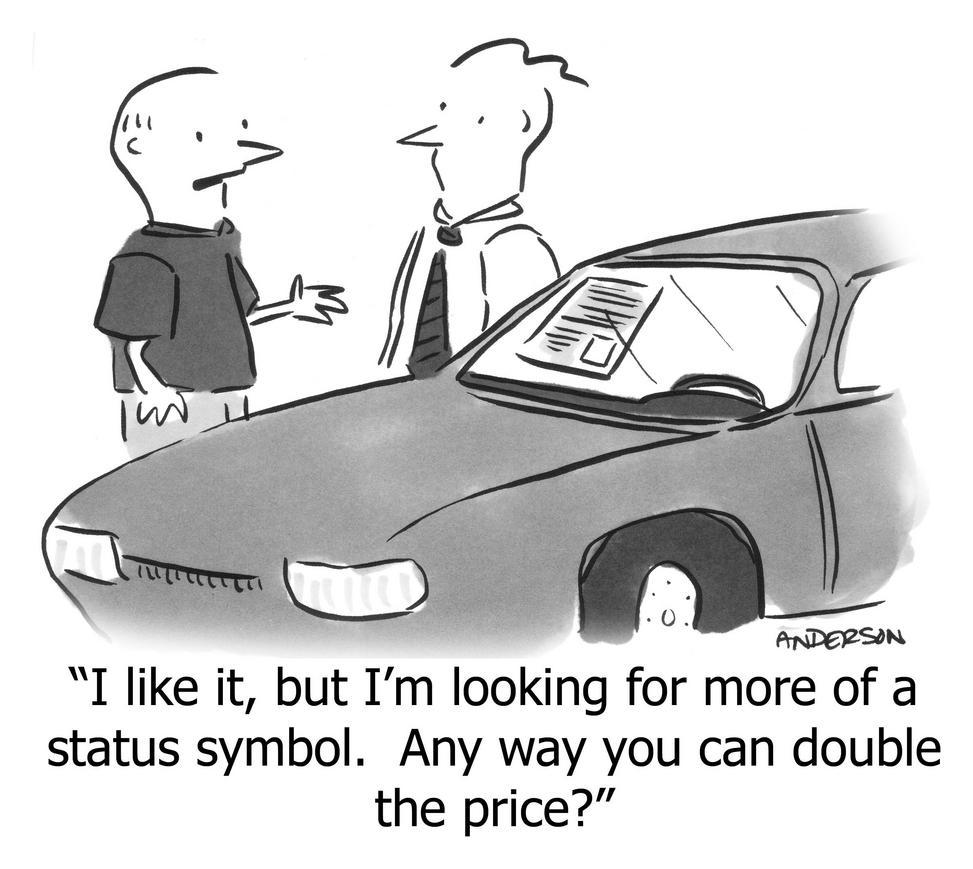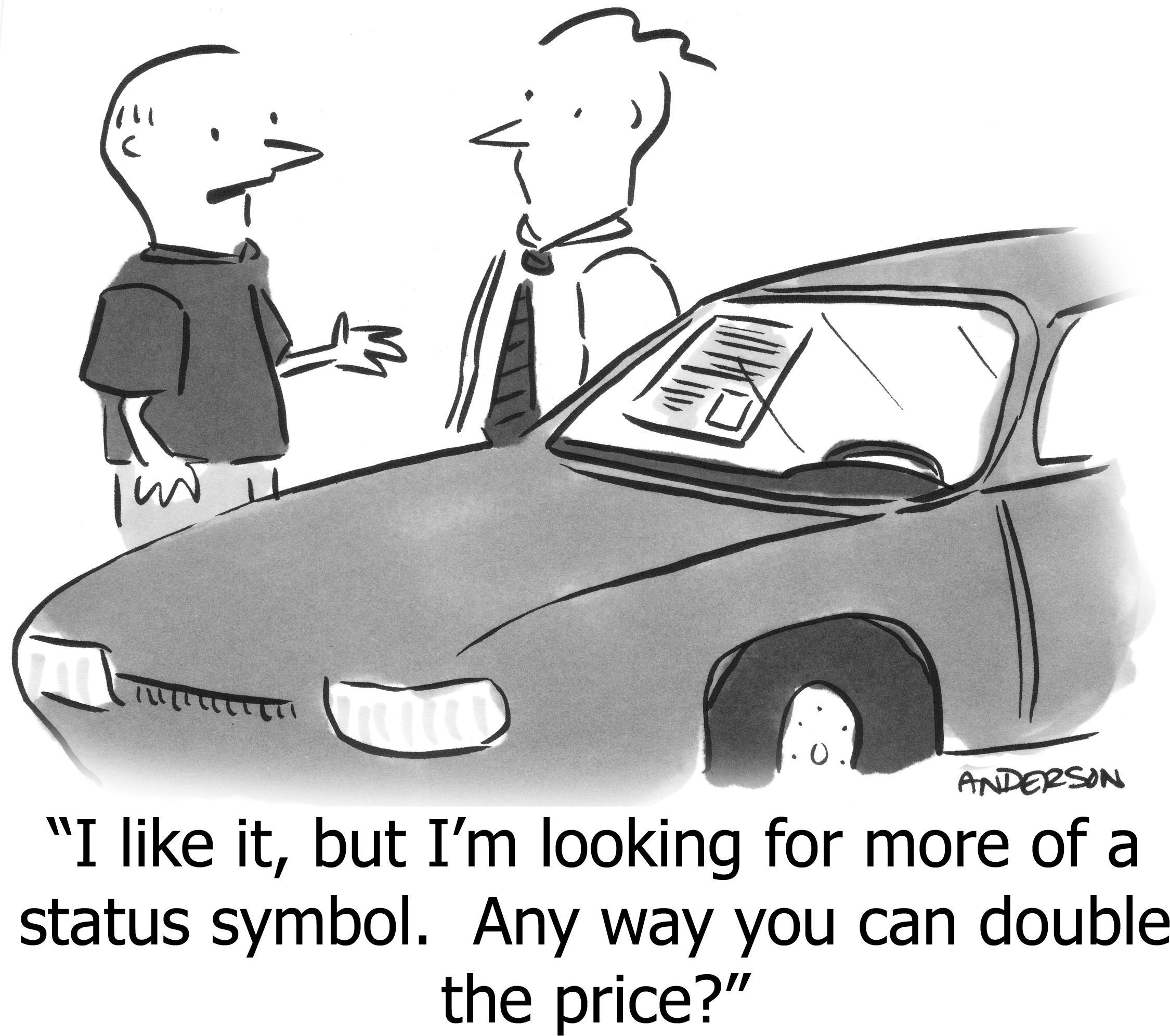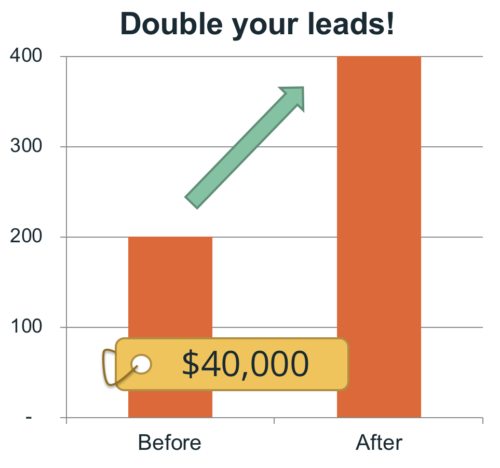How repositioning a product allows you to 8x its price
Pricing is much more about positioning and perceived value than it is about cost-analysis and unconvincing ROI calculators. Let’s see how repositioning can result in a much higher price for the same product.
You’ve created a marketing tool called DoubleDown that doubles the cost-efficiency of AdWords campaigns. You heard that right folks—as a marketer, you can generate the same impact, the same number of conversions, the same quality of sales leads, but with half your current ad-spend. Wonderful! Who doesn’t want higher ROI.
What can you charge for this tool? Well, the customer will save a certain amount of money on ad-spend; surely you cannot charge more than that. Let’s say you can charge 25% of the savings and still find many willing customers.1
1 There is data supporting the “25%” number. In addition, there are these observations: If you charge less, you’re not monetizing enough; if you charge much more, you leave too much space for a competitor.
Here’s what your sales pitch looks like to a customer who spends $40,000 per month on AdWords:

Figure 1
Great deal! The VP of Demand Gen will be able to boast to the CMO that she saved the company $15,000/mo even after paying for DoubleDown, and you’re raking in a cool $5,000/mo. Everyone’s happy!
Now let’s see how to charge eight times as much money for the same product.
Marketers have a paramount goal: Growth. Even indirect marketing like brand, events, and PR have the indirect goal of supporting growth. In the case of DoubleDown’s customers it’s direct: Growth through lead-generation through AdWords.
Increasing growth is much more valuable than decreasing cost. To see why, consider the following two scenarios:
- CMO reports to the CEO: I was able to reduce costs 20% this year.
The CEO is happy. The CEO’s follow-up question is: How will we use those savings to grow faster?
- CMO reports to the CEO: I was able to increase growth by 20% this year, but it also cost us 20% more to achieve.
The CEO pumps her fists, releasing peels of joyous laughter. The value of the company increases non-linearly. The additional revenue growth more than pays for the additional marketing cost that generated it. The CEO’s follow-up question is: Can we spend even more? How can we ensure this happens again next year?
It’s always 10x more valuable for a business to grow faster than it is for the business to save money.
This insight points us to an alternate pitch for DoubleDown. It’s not about spending less for the same amount of growth, it’s about spending more to create more growth.
Continuing our example, suppose the customer generates 200 quality sales leads per month from their $40,000/mo spend. The sales pitch changes as follows:
You’re paying $200/lead right now, yielding 200 leads per month. Using DoubleDown, you can double the number of leads you’re generating, still at a cost of $200/lead:

Figure 2
The customer is willing to spend $40,000 to generate 200 leads, and therefore is happy to spend $80,000 to generate 400 leads. It doesn’t matter how much of that $80,000 is going to AdWords versus going to DoubleDown. The goal is not to “save money on AdWords,” but rather to “generate more growth at a similar unit cost.”
In the “saves money” pitch, the value was $20,000, and the customer needed to keep 75% of that value-creation. Whereas in the “generate growth” pitch, the value is $40,000, and the customer is happy to pay 100% of that value-creation to a vendor. Both the amount of value created, and the percentage of value the customer is willing to pay, is a multiple higher for the “growth” pitch versus the “save money” pitch.
So the next time you want to formulate your product as a way to “save time” or “save money” or “be more efficient” …. don’t.
Instead, figure out how your product creates value in the way your customer already measures value, and position your product as a way to accomplish that.
https://longform.asmartbear.com/more-value-not-save-money/
© 2007-2025 Jason Cohen
 @asmartbear
@asmartbear ePub (Kindle)
ePub (Kindle)
 Printable PDF
Printable PDF









